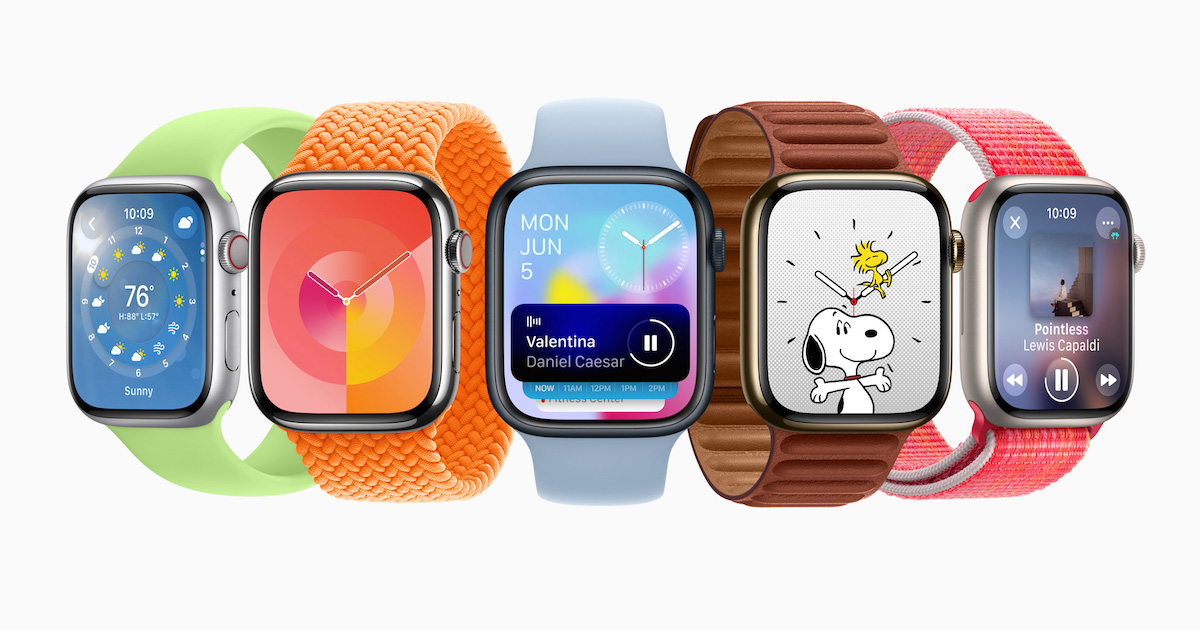Apple revealed the latest update of its Watch wearables today, the Apple watchOS 10, which will include new mental health, vision health and fitness tools.
The watchOS 10 will allow users to log their emotions and daily moods via the Mindfulness app. Users will be able to turn the Digital Crown to select a shape to describe and track their feelings.
Commonly used depression and anxiety assessments will also be available in the Health app. Users can create a PDF with the assessment results and connect with and share those results with mental health resources in their area.
New fitness-focused features for cycling will be available, including workout reminders and fall detection. When a cycling workout begins, the user’s iPhone screen will automatically show a live activity began and display heart rate, elevation, race route, custom workouts and cycling speeds.
Another aspect of the new watchOS focuses on vision health, allowing users to measure the amount of time spent outdoors, which the company says can contribute to one’s physical and mental health, including raising the risk of nearsightedness with more sun exposure. The data relating to one’s time spent outdoors will be viewable via the Health app on iPhone or iPad.
The watch will also include an addition to the medications app, where follow-up reminders can be sent 30 minutes after the scheduled time users were supposed to log a medication.
Apple also announced its updated iOS17 and iPadOS17, which will include an updated Health app that helps users identify if lifestyle factors, such as sleep or exercise, may be contributing to their state of mind.
Additionally, the tech giant announced features on iPhone and iPad that use the TrueDepth camera, the same camera used with its FaceID technology, to measure how far away a user is holding their phone from their eyes. Users will be encouraged to hold the device more than 12 inches if the camera has determined its been held too close to a user’s face for an extended period of time.
Finally, the tech giant unveiled the Apple Vision Pro and visionOS platform, an augmented reality headset. The Vision Pro includes entertainment and spatial audio, collaboration methods, and real-time video recording, among numerous other features.
The device utilizes Optic ID to scan one’s eyes to unlock the device. The eye-tracking technology also allows for payment through eye gaze, though the company says eye gaze is private to app developers for users’ privacy. The AR headset will be available early next year and will start at $3,499.
THE LARGER TREND
In 2020, AliveCor, a medical device company that makes personal ECGs, sued Apple, alleging the tools the tech giant included in its Series 4 Watch and later infringed on AliveCor patents.
In March of last year, AliveCor filed an antitrust suit against the tech giant, months after Apple sued AliveCor, alleging patent infringement.
In December, the U.S. Patent and Trademark Office’s Patent Trial and Appeal Board determined that three AliveCor patents for detecting heart conditions like cardiac arrhythmias were not patentable.
Later that month, the U.S. International Trade Commission ruled that Apple Watches with ECG functionality violated two AliveCor patents.
The ITC issued a limited exclusion order prohibiting further imports and a cease and desist order against Apple. It also set a bond of $2 per unit imported or sold during the Presidential review period. However, enforcement of the orders, including the bond, was suspended until the case before the U.S. Patent and Trademark Office’s Patent Trial and Appeal Board was resolved.
In February, the ITC ruling cleared the Presidential review, with Biden allowing the ITC ruling to stand, and the companies are still battling it out in court.
This story originally appeared on MobiHealthNews

